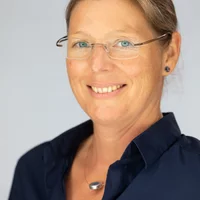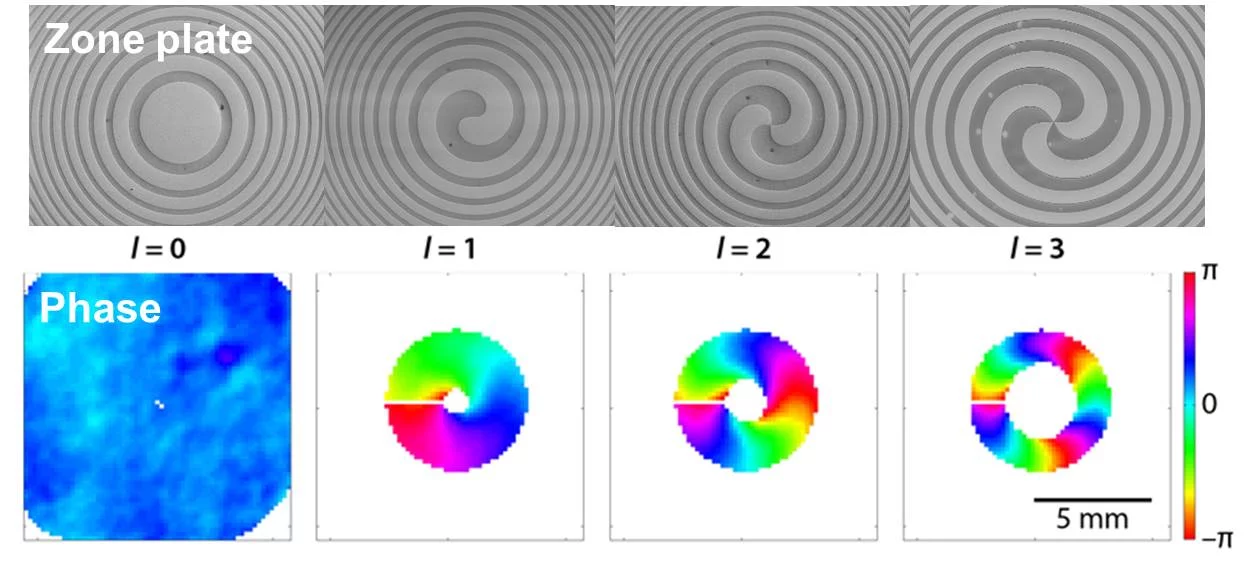Optical vortices can be described as radiation which carries an orbital angular momentum. In contrast to circularly polarized light from synchrotron and free electron laser sources, it is not the electric and magnetic field vector but the phase of the electromagnetic field that rotates around a singularity in a helical fashion. The vortex can be characterized with an integer-numbered topological charge, which describes how often the phase rotates by 360°. Possible applications of these unique beams are the investigation of quadrupole transitions, angle-dependent emission of photoelectrons from supermolecular orbital states, defining torus-shaped beams, or scattering at magnetic vortices.
To demonstrate optical vortices at free electron lasers, we fabricated spiral zone plates, which yield a diffraction pattern with such a phase singularity. The material of choice for the extremely intense EUV radiation of the FERMI free electron laser is silicon. Thus, we etched spiral zone plates into ultraflat thin silicon membranes, and characterized the radiation using a Hartmann wavefront sensor downstream of the zone plate focal plane. The experiment enabled the first demonstration of orbital angular momentum in radiation created by a free electron laser in the extreme ultraviolet regime, with an extraordinary clean and defined wavefront.
Publications
- P. R. Ribič, B. Rösner, D. Gauthier, E. Allaria, F. Döring, L. Foglia, L. Gianessi, N. Mahne, M. Manfredda, C. Masciovecchio, R. Mincigrucci, N. Mirian, E. Principi, E. Roussel, A. Simoncig, S. Spampinati, C. David, G. de Ninno. (2017) Extreme-Ultraviolet Vortices from a Free-Electron Laser, Physical Review X 7, 2017, 031036.
- B. Rösner, F. Döring, P. R. Ribič, D. Gauthier, E. Principi, C. Masciovecchio, M. Zangrando, J. Vila-Comamala, G. de Ninno, C. David. (2017) High Resolution Beam Profiling of X-ray Free Electron Laser Radiation by Polymer Imprint Development, Optics Express 25, 30686-30695.


